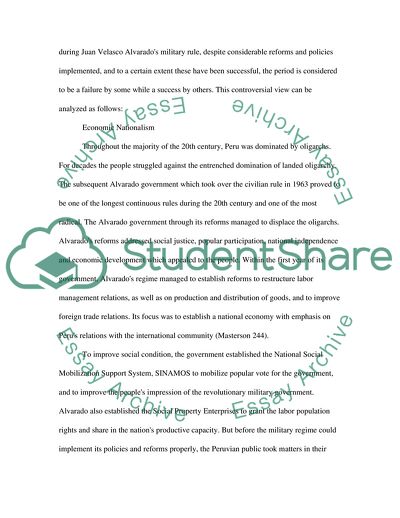Cite this document
(Failure of General Juan Velasco Alvarado's Peruvian Regime Term Paper, n.d.)
Failure of General Juan Velasco Alvarado's Peruvian Regime Term Paper. https://studentshare.org/history/1718259-why-did-juan-velasco-alvarados-military-regime-in-peru-declinefail-and-how-could-he-have-done-thing-differently-in-order-to-prolong-his-stay-in-power
Failure of General Juan Velasco Alvarado's Peruvian Regime Term Paper. https://studentshare.org/history/1718259-why-did-juan-velasco-alvarados-military-regime-in-peru-declinefail-and-how-could-he-have-done-thing-differently-in-order-to-prolong-his-stay-in-power
(Failure of General Juan Velasco Alvarado'S Peruvian Regime Term Paper)
Failure of General Juan Velasco Alvarado'S Peruvian Regime Term Paper. https://studentshare.org/history/1718259-why-did-juan-velasco-alvarados-military-regime-in-peru-declinefail-and-how-could-he-have-done-thing-differently-in-order-to-prolong-his-stay-in-power.
Failure of General Juan Velasco Alvarado'S Peruvian Regime Term Paper. https://studentshare.org/history/1718259-why-did-juan-velasco-alvarados-military-regime-in-peru-declinefail-and-how-could-he-have-done-thing-differently-in-order-to-prolong-his-stay-in-power.
“Failure of General Juan Velasco Alvarado'S Peruvian Regime Term Paper”. https://studentshare.org/history/1718259-why-did-juan-velasco-alvarados-military-regime-in-peru-declinefail-and-how-could-he-have-done-thing-differently-in-order-to-prolong-his-stay-in-power.


